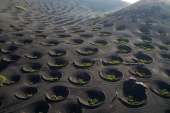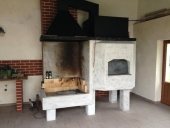They had a different formula, which resulted in a substance that was not as strong as the modern product. Yet structures like the Pantheon and the Colosseum have survived for centuries, often with little to no maintenance
“Roman concrete is . . . considerably weaker than modern concretes. It’s approximately ten times weaker,” says Renato Perucchio, a mechanical engineer at the University of Rochester in New York. “What this material is assumed to have is phenomenal resistance over time.”
Geologists, archaeologists and engineers are studying the properties of ancient Roman concrete to solve the mystery of its longevity.
“Emperor Augustus was the driving force behind the systemization, standardization of mortar mixes with Pozzolane Rosse,” says Marie Jackson, a geologist and research engineer at the University of California at Berkeley. Roman builders likely favored the ash deposit because of the durability of concrete made with it, she adds. “This was the secret to concretes that were very well bonded, coherent, robust materials.”
Can anyone point me to where I can find guidance on creating a Practical (read- cure at ambient temperature and affordable) do-it-yourself- recipe for building walls from volcano ash?
One of the Engineers or universities noted above. Life cycle fatigue and chemical resistance are two of many structural properties needed for load bearing walls (note above 10s weaker in other mechanical properties usually means very thick walls and/or lots of weight to soil that have to resist it). These structures were built with pozzolane roose your ash would need to be tested there may be nothing "golden" about it. You would then work with a local lab to combine it with aggregates and binders, develop and test core samples. Most ready mix companies have them in house and will charge you plenty to design your own mix. Then if in a code restricted zone you would have to get them to adopt it or go way out in rural and experiment on your own so noone gets hurt (that is why we have building laws since people try things they do not understand). Most use fly ash as the pozzolan since it is readiy available, effective, and inexpensive. You might check with American Concrete Institute and see if there is standard you can follow. Never pull something off the internet and use it as a design guide unless you have the credentials to understand it in full content.
Paramount Natural Design-Build Architect, Engineering Services, GC, LLC.








